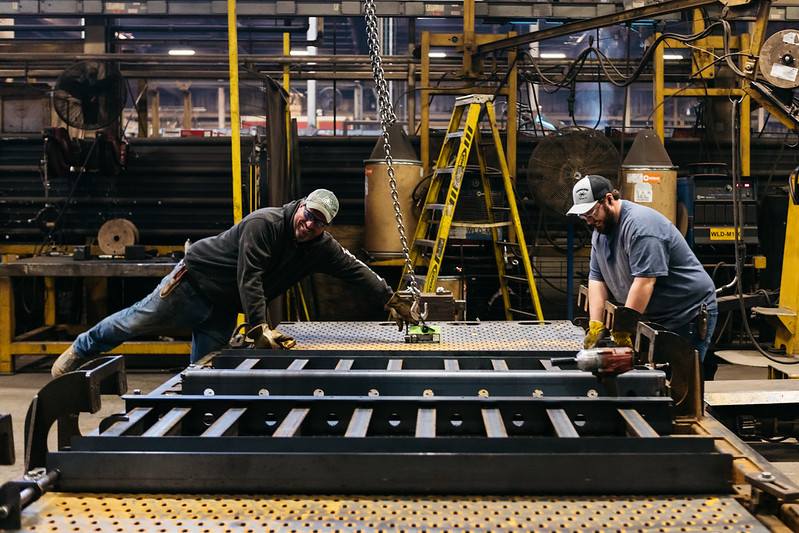By Danny Gavin, AEM Communications Coordinator —
Sugarcane harvesting has come a long way in the last 50 years – and the effects are being felt twofold in Brazil, the world’s top producer of sugar. As explored in Topcon's newly released whitepaper, ‘Controlled Traffic in Sugarcane’, the ripple effect of precision agriculture technology is being felt around the country, as Brazil makes leaps and bounds in the creation meaningful employment opportunities, operational efficiency and sustainability.
For Topcon, sustainability is a balance between profit, people and the planet. The company’s most recent whitepaper is a great case for all three: the economics of precision agriculture technology drive adoption, the workers in the sugarcane industry get to have a skill-based career and there are elements of sustainability woven throughout the entire operation.
“Sustainability is a business strategy. It’s not a nice-to-have, it’s actually one of the driving forces for this effort. It’s being driven by the environmentally sensitive regulations that Brazil has put into place,” said Mike Gomes, vice president of sustainability and global CSR for Topcon.
It all boils down to one very important change that occurred in the 1970’s: the increased adoption of mechanized harvesting. An increase in domestic manufacturing in Brazil and the increased availability of imported technology spurred the adoption of mechanized harvesting, as opposed to the traditional method of burning the fields and cutting them down by hand. In fact, as shown in the company’s video summarizing the whitepaper, mechanized harvesting has tripled in usage from 33% in 2010 to 98% today, and it has created countless benefits for the environment, employees and the industry as a whole.
Benefits Felt Far Beyond the Field
The benefits of GNSS systems, machine control and path planning can be felt both on and off the field. Employees have certainly felt the effects, as the increased adoption of this technology has created more meaningful employment opportunities for thousands.
“We start training by helping workers understand the importance of both the operation as a whole and why their specific role is important,” said Bruna Passalaqua, digital farming channel specialist for the LATAM region. “They are the soul of what we are doing. When the sugarcane season is over, our operators don’t move on to work for another producer. They stay with the company that trained them, which is another component that makes the industry more sustainable for the workers.”
“Twenty to 30 years ago, a sugarcane worker had a machete, and it was all manual labor. Now, these employees are machine operators. They’re truly driving the productivity of the machine,” said Gomes.
“Sustainability is a business strategy. It’s not a nice-to-have, it’s actually one of the driving forces for this effort. It’s being driven by the environmentally sensitive regulations that Brazil has put into place.” - Topcon's Mike Gomes
Technology in the Field
The effects of technology in the field have a direct and lasting impact. In the past, fields could only be harvested for one to two years due to soil compaction and/or damage to the regenerating line of growing points by tractors, trailers and workers. By decreasing the amount of soil compaction with controlled traffic and auto-steering systems, producers can now farm their fields for five to six years – a dramatic contrast to the days in which technology wasn’t as present in their operations.
Controlled traffic and targeting systems lead to increased productivity in the field and increased operational capacity, especially in low-visibility conditions, as well as reduced use of inputs, reduction in operator fatigue and a more rapid return on investment.
This is reflected in some astounding numbers. Traffic control has led to:
- An 11% reduction in field operating costs.
- A 19% reduction in total costs for production.
- A 67% increase in overall yield in crops.
GNSS systems, machine control and path planning reduce losses from equipment damage as well as tillage requirements and soil compaction, all while enhancing efficiency and reducing operator fatigue. “They use these technologies to improve the rows, which are really the beginning of everything in the field,” said Passalaqua.
Setting the United Nations Sustainability Goals into Action
The effects of precision agriculture technology push Brazil closer to the United Nations Sustainable Development Goals – particularly numbers 7 and 8. These goals aim to achieve a more sustainable future for all, which aligns closely with Topcon's goals for their organization and Brazil’s commitment to the environment.
Sustainable Development Goal 7 aims to ‘ensure access to affordable, reliable, sustainable and modern energy for all’.
Brazil is a net exporter of renewable fuels, and the amount that the country exports has increased in the past decade due to the increased availability and adoption of precision ag technology. As Brazil reaches for energy independence, it is clear that precision agriculture technology is a massive enabler that will encourage this effort.
Sustainable Development Goal 8 aims to ‘promote sustained, inclusive and sustainable economic growth, full and productive employment and decent work for all’.
This is clearly reflected in the change to the workforce that Brazil has seen over the past two decades. From the transition from machete-wielding harvester to machine operator, to the consistent and reliable workplace of today, sugarcane harvesting workers have more meaningful employment opportunities – in addition to bringing an increased quality of life to many in an important field of work.
“We start training by helping workers understand the importance of both the operation as a whole and why their specific role is important. They are the soul of what we are doing. When the sugarcane season is over, our operators don’t move on to work for another producer. They stay with the company that trained them.” - Topcon's Bruna Passalaqua
The Takeaway
As explored in Topcon's newly released whitepaper, the positive ripple surrounding precision agriculture has changed the landscape of sugarcane harvesting in Brazil. These technologies additionally have the potential to be applied to other industries across North America with the hope of similar results.
Technologies such as GNSS, machine control and path planning have increased productivity, reduced the costs associated with operations and improved the lives of countless employees. Furthermore, they have helped Brazil reach towards sustainable development goals with the aim of creating a better future for the country. The benefits of precision agriculture are felt both on and off the field, as Brazil works to create a prosperous agricultural environment that promotes sustainability and high quality of life.
For more AEM news and updates, subscribe to the AEM Industry Advisor.





